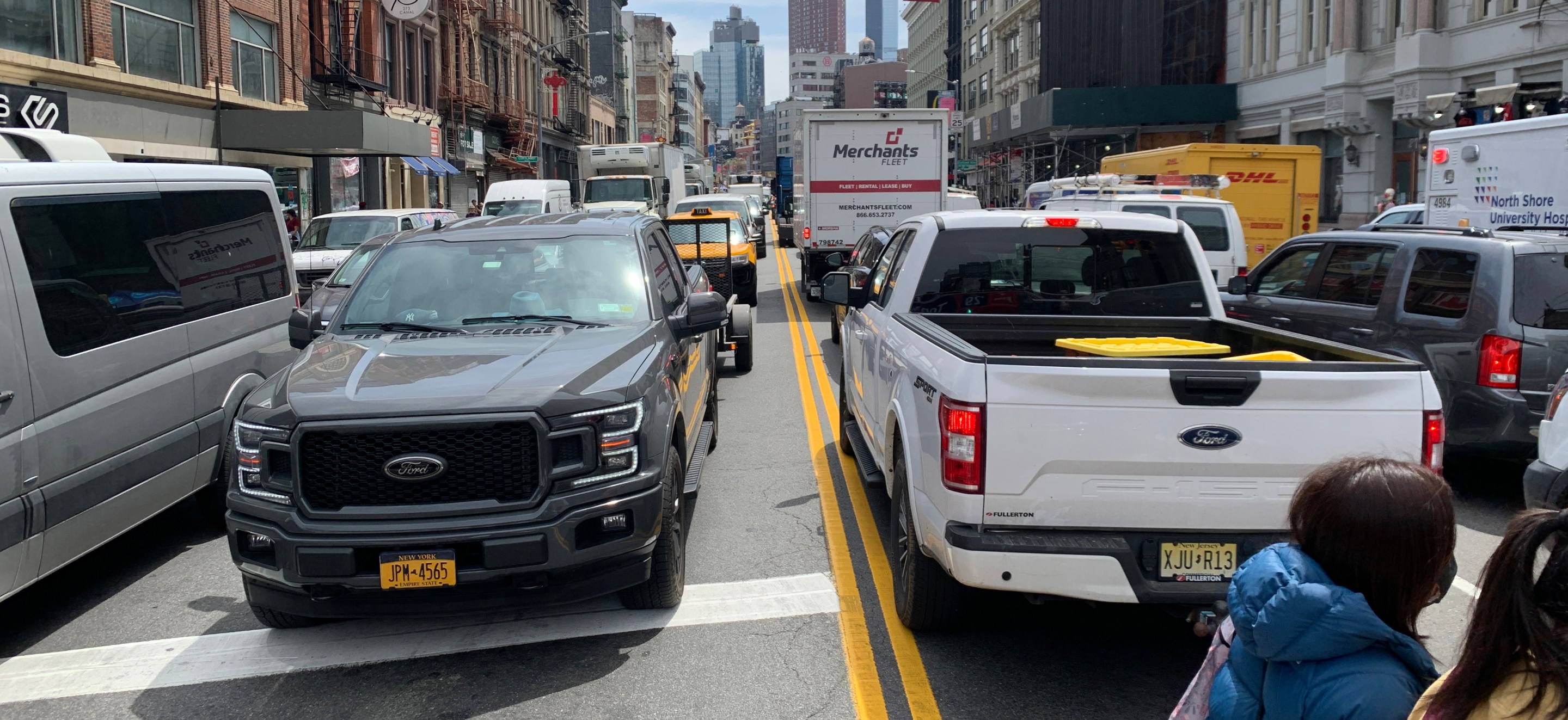No, Canal Street isn't safe yet.
Manhattan Borough President Mark Levine is obviously tired of waiting, so he and four Lower Manhattan lawmakers, plus Community Board 1, sent a letter to the Department of Transportation this week expressing "great concern about the unsafe conditions on Canal Street" and demanding that the agency "consider implementing interim safety measures" now that the roadway has been repaved, but not yet restriped (as of Thursday afternoon).
Levine and his cohort want fruit that is so low that one could barely call it hanging, namely:
- Reducing the speed limit on the Manhattan Bridge to 25 mph so car drivers don't fly off the span onto local streets.
- Installing hardened boulders or filled planters to daylight corners and the addition of raised crosswalkson previously identified “Turn Calming” program priority intersections. (See map below.)
- Increasing the number of Leading Pedestrian Intervals along Canal Street.

It's unclear if any of those six intersections will get the kind of full turn treatments mentioned in this amazing DOT video, but they all should, given that there have been 10 traffic fatalities and more than 700 injuries on Canal since Vision Zero was implemented in 2014.
The most recent fatality was on March 6 when a hit-and-run driver killed a man near Lafayette Street.
Canal Street — which links the Holland Tunnel and the Manhattan Bridge and, therefore, is mostly for drivers who are trying to get out of Manhattan — is one of the most-studied sluices in the city. The DOT did a "multi-phase traffic engineering study" from 2002 to 2010 that made a number of recommendations — a carpool lane on the Manhattan Bridge, full curb extensions along the corridor, restricted left turns — that were almost entirely ignored.
On the eve of the pandemic, Community Board 1 voted in 2020 to demand that DOT "fix Canal" with expanded pedestrian space and an east-west protected bike lane on or near Canal. None of that happened. In fact, in the almost-exactly four years since that March vote, there have been 778 reported crashes on Canal between West Street and the Manhattan Bridge, injuring 56 cyclists, 50 pedestrians and 190 motorists, according to city stats.
So locals could be forgiven for thinking, "Why isn't this done already?"
In fairness to DOT, the agency is not behind its latest schedule. In March 2022, the agency held a virtual design workshop that generated a map of all the things people say they want to see. That workshop made it clear that the agency would have a draft of a design by the end of 2023 and would present the proposal publicly in "approx. 2024," with an asterisk that said, "pending results of outreach data."
And it's not as if the agency hasn't done nothing: it has added some additional pedestrian space in place of what was once car parking; it added a pedestrian island at Bowery and Canal; it has untangled some of the mess near the Holland Tunnel entrance.
But it's not enough, Levine said. "Over the past 20 years, Canal Street has been studied for potential improvements and yet many seemingly unsafe conditions remain," the letter stated.
In a statement, DOT spokesperson Anna Correa told us, "DOT has been actively studying Canal Street and looks forward to sharing safety recommendations with the community this year."
In other news:
- The MTA says it'll spend on $6 billion on climate resiliency (hint: don't be surprised if some of these projects end up in the next capital plan). (NYDN, amNY)
- Like Streetsblog, Gothamist covered the gruesome Transportation Alternatives fatality report.
- So what caused that Lower Manhattan garage collapse in 2023? It definitely wasn't the increasing weight of American cars, says the Department of Buildings. But what was it? The agency ain't saying for some reason. (Crain's)
- Here's a federal bill to stop congestion pricing that will literally go nowhere (much like Midtown traffic ... before congestion pricing, that is). (ABC7, NY Post)
- Confession time: We love all plausible UFO stories. And so does the Post.






